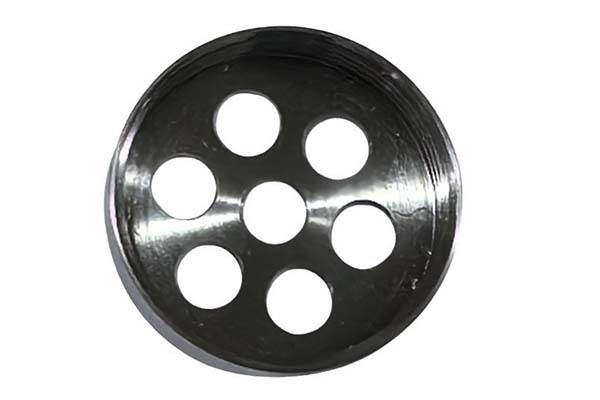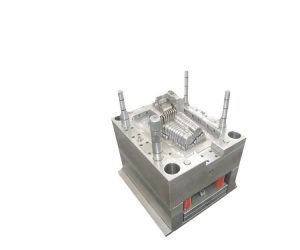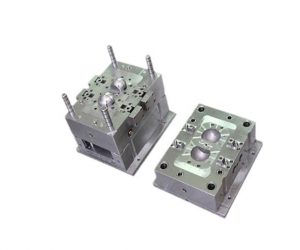1. Introduction to Prototype Makers
1.1 What Exactly is a Prototype Maker?
A prototype maker is a specialized service provider that transforms conceptual designs into physical or digital models for testing, validation, and refinement. These makers use advanced technologies like 3D printing, CNC machining, and rapid tooling to create functional prototypes, enabling businesses to identify design flaws early and reduce production risks.
For Yigu Technology instance, in the automotive industry, before mass - producing a new car model, companies work with prototype makers. The prototype maker will use CNC machining to create accurate parts of the car's body, engine components, etc. These prototypes are then tested for aerodynamics, performance, and safety. By doing so, car manufacturers can avoid costly mistakes during the actual production stage. According to a study by the Society of Automotive Engineers, 70% of design flaws can be identified and rectified during the prototype stage, which can lead to a 30 - 40% reduction in production costs.
Prototype makers are not limited to the automotive sector. They play a crucial role in various industries such as consumer electronics, aerospace, and medical device manufacturing. In consumer electronics, when a company plans to launch a new smartphone, the prototype maker will first create a 3D - printed model of the phone's exterior. This allows the design team to evaluate the ergonomics, button placement, and overall aesthetics.
2. Core Elements of a Reliable Prototype Maker
2.1 Technical Capabilities
2.1.1 Manufacturing Technologies
A reliable prototype maker should be well - versed in a variety of manufacturing technologies. Two of the most prominent ones are additive manufacturing (commonly known as 3D printing) and subtractive manufacturing (such as CNC machining).
3D printing, or additive manufacturing, builds a prototype layer by layer from a digital model. It is highly suitable for creating complex geometries that would be extremely challenging or even impossible to achieve with traditional manufacturing methods. For example, in the creation of a custom - designed heat sink for an advanced electronics device, 3D printing can produce intricate internal channels for better heat dissipation. These channels can have irregular shapes and varying cross - sectional areas, which are difficult to fabricate using subtractive methods. According to a report by Wohlers Associates, the use of 3D printing in prototyping has grown by an average of 27% annually over the past decade, indicating its increasing importance in the industry.
On the other hand, CNC (Computer Numerical Control) machining, a subtractive manufacturing process, starts with a solid block of material and removes excess material through cutting, milling, and drilling operations. It offers high precision and is ideal for prototypes that require tight tolerances and smooth surface finishes. In the aerospace industry, CNC - machined prototypes of turbine engine components can accurately replicate the final product's dimensions. The precision of CNC machining allows for the production of parts with tolerances as low as ±0.001 inches, which is crucial for the performance and safety of aerospace components.
A comparison between the two methods for different design complexity levels can be seen in the following Yigu Technology table:
| Design Complexity | Additive Manufacturing (3D Printing) | Subtractive Manufacturing (CNC Machining) |
| High (Complex Geometries) | Excellent. Can easily create complex internal structures, overhangs, and lattice patterns without the need for additional supports or complex tooling. | Challenging. Requires multiple set - ups and complex tool paths. May not be able to create some extremely complex geometries without sacrificing precision or adding significant cost. |
| Low (Simple Geometries) | Feasible but may be less cost - effective for large - scale production. Longer build times for simple shapes compared to CNC. | Highly suitable. Quick and cost - effective for simple shapes. High - precision machining can be achieved with relatively simple tooling. |
2.1.2 Material Expertise
Material expertise is another crucial aspect of a prototype maker. A good prototype maker should be able to work with a wide range of materials, including metals, polymers, and biocompatible materials.
When it comes to metals, materials like aluminum, titanium, and stainless steel are commonly used in prototyping. Aluminum is popular due to its low density, high strength - to - weight ratio, and excellent thermal conductivity. In the automotive industry, aluminum prototypes of engine blocks can help engineers test the design's performance in terms of heat dissipation and mechanical strength. Titânio, on the other hand, is known for its high strength, corrosion resistance, and biocompatibility. It is often used in aerospace and medical device prototyping. For example, in the development of a new artificial hip joint, a titanium prototype can be created to test its fit, durability, and compatibility with the human body.
Polymers, such as ABS (Acrylonitrile Butadiene Styrene), PLA (Polylactic Acid), and Nylon, are also widely used in prototyping. ABS is a strong and durable plastic, making it suitable for functional prototypes that need to withstand mechanical stress. PLA is a biodegradable polymer, which is often chosen for environmentally - friendly prototypes or those in the consumer goods industry where aesthetics and cost - effectiveness are important. Nylon has excellent wear resistance and is commonly used in prototypes for moving parts, such as gears and bearings.
Biocompatible materials are essential for medical device prototyping. Materials like PEEK (Polyether Ether Ketone) and silicone are often used. PEEK has high strength, chemical resistance, and biocompatibility, making it suitable for spinal implants and other orthopedic devices. Silicone is flexible, non - toxic, and has good biocompatibility, which is why it is frequently used in the prototyping of soft tissue implants, such as breast implants and catheters.
2.2 Industry Experience
2.2.1 Case Studies
Industry experience is a strong indicator of a prototype maker's capabilities. A prototype maker with case studies in industries such as automotive, aerospace, or medical can demonstrate in - depth domain knowledge.
For example, consider a prototype maker that has worked on automotive projects. In one case, they were tasked with creating a prototype of a new fuel - efficient engine design. By collaborating closely with the automotive engineers, they used their expertise in CNC machining and material selection to create a high - precision prototype. The prototype was then tested rigorously for performance, emissions, and durability. Through this process, the prototype maker was able to identify several design flaws early on, such as inefficient fuel injection channels and weak engine block areas. These issues were addressed, and the final engine design was more efficient and reliable. This case study shows how a prototype maker's experience in the automotive industry can lead to better - quality prototypes and ultimately, improved products.
In the aerospace industry, a prototype maker might have experience in creating prototypes of aircraft wing components. They would need to understand the unique requirements of aerospace materials, such as high strength - to - weight ratios and resistance to extreme temperatures and pressures. By working on multiple aerospace projects, they have developed the skills to use advanced manufacturing techniques, like electron beam melting for 3D printing of metal components, to create prototypes that meet the stringent standards of the aerospace industry.
In the medical field, a prototype maker could have been involved in the development of a new minimally invasive surgical instrument. Using biocompatible materials and precise manufacturing processes, they created a prototype that allowed surgeons to test the instrument's functionality, ergonomics, and safety. The feedback from the surgeons was used to refine the design, resulting in a more user - friendly and effective surgical tool.
2.2 Quality Assurance
Certifications are an important measure of a prototype maker's quality standards. ISO 9001 is an international standard that sets out the criteria for a quality management system. It emphasizes customer focus, leadership, and continuous improvement. A prototype maker with ISO 9001 certification has a structured approach to quality control, from the initial design review to the final inspection of the prototype. This ensures that the prototypes meet or exceed the customer's expectations in terms of quality, functionality, and delivery time.
3. Key Criteria for Selection
3.1 Comparative Analysis Table
When choosing a prototype maker, several key criteria can help you make an informed decision. The following comparative analysis Yigu Technology table highlights some of the important factors to consider:
| Criteria | What to Look For | What to Avoid |
| Turnaround Time | 1–7 days for rapid prototyping | Unrealistic delays or vague timelines |
| Cost Structure | clear quote with no hidden fees | Overly low bids suggesting quality risks |
| Communication | Dedicated project managers and regular updates | Slow responses or poor English skills |
Turnaround Time: A good prototype maker should offer rapid prototyping services with a turnaround time of 1 - 7 days, depending on the complexity of the project. This allows you to quickly test and iterate on your designs. Unrealistic delays can set back your product development schedule, and vague timelines can lead to uncertainty and frustration.
Cost Structure: Look for a prototype maker that provides transparent quotations with no hidden fees. This ensures that you know exactly what you are paying for and can budget accordingly. On the other hand, overly low bids may be a sign of quality risks, such as the use of sub - standard materials or inexperienced labor.
Communication: Effective communication is crucial for a successful prototype project. A reliable prototype maker will assign dedicated project managers who can provide regular updates on the progress of your project. Slow responses to your inquiries or poor English skills can lead to misunderstandings and delays.
3.2 Case Studies in Success
Real - world case studies can further illustrate the importance of choosing the right prototype maker.
- Medical Device Example: Yigu Technology was approached by a medical device company that needed to develop a custom orthopedic implant prototype. The design was complex, with intricate shapes to fit the human body's unique contours. Yigu Technology used SLA (Stereolithography) 3D printing, which is known for its high precision and ability to create detailed models. By using this technology, they were able to reduce the development time by 50% compared to traditional manufacturing methods. Moreover, they ensured that the prototype met all FDA (Food and Drug Administration) standards. This involved rigorous material testing to ensure biocompatibility and strength, as well as dimensional accuracy testing to guarantee a proper fit. The successful prototype led to the faster development of the final product, which was brought to market more quickly, providing a solution to patients in need sooner.
- Automotive Case: A German automaker was looking to optimize the design of a bracket in their vehicle. The goal was to reduce the weight of the bracket without sacrificing strength, as weight reduction can improve fuel efficiency and overall vehicle performance. They worked with a prototype maker that specialized in topology optimization and CNC machining. Through topology optimization, the prototype maker analyzed the stress distribution in the bracket and removed unnecessary material, achieving a 30% weight reduction. Then, using CNC machining, they created a high - precision prototype that accurately replicated the optimized design. The prototype was tested under various simulated driving conditions, and it performed even better than expected. This led to the implementation of the new bracket design in the production vehicles, improving the automaker's product competitiveness.
4. Conclusion
In the dynamic landscape of product development, the role of a prototype maker cannot be overstated. As we've explored, these specialists are the linchpins that bridge the gap between concept and reality, offering a blend of technical prowess, industry - know - how, and quality - centric approaches.
The importance of choosing the right prototype maker is equivalent to laying a solid foundation for a skyscraper. A misstep in this selection process can lead to costly errors, delays, and ultimately, a product that fails to meet market expectations. By prioritizing technical expertise, as demonstrated through their mastery of manufacturing technologies like 3D printing and CNC machining, and material knowledge across metals, polymers, and biocompatible materials, you ensure that your prototype is built with precision and using the right substances for the job.
Industry experience, as evidenced by diverse case studies and a broad portfolio, provides invaluable insights. It allows the prototype maker to anticipate challenges, draw on past successes, and apply best practices, whether it's in the automotive, aerospace, or medical fields. Quality assurance, backed by certifications and rigorous testing protocols, guarantees that the prototype not only functions as intended but also adheres to the highest standards of safety and reliability.
When making your selection, the comparative analysis table serves as a practical guide. It helps you navigate through the maze of factors such as turnaround time, cost structure, and communication, ensuring that you make an informed decision.


